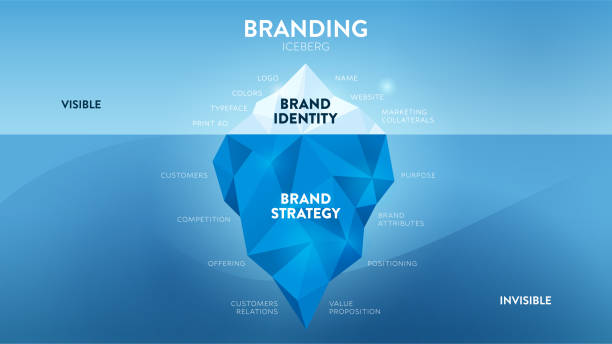Table of Contents
In today’s competitive marketplace, a strong brand identity is essential for businesses to stand out and succeed. Branding is more than just a logo or a slogan; it’s a comprehensive strategy that encompasses a company’s values, mission, and personality. A well-defined brand identity helps businesses connect with their target audience, build trust, and create a lasting impression.

What is Branding?
Branding is the process of creating a unique identity for a product or service. It involves developing a distinctive brand name, logo, tagline, and visual elements that represent the brand’s values and personality. A strong brand identity is more than just aesthetics; it reflects the company’s culture, mission, and values.
Why is Branding Important?
Branding is crucial for businesses for several reasons:
- Brand Recognition: A strong brand is easily recognizable and memorable. When consumers see the brand’s logo or hear its name, they immediately associate it with a certain product or service.
- Customer Loyalty: A well-established brand can foster customer loyalty. When consumers trust and admire a brand, they are more likely to remain loyal to it and recommend it to others.
- Differentiation: In a crowded marketplace, branding helps businesses differentiate themselves from competitors. A unique brand identity can make a company stand out and attract customers.
- Premium Pricing: Strong brands often command a premium price. Consumers are willing to pay more for products and services from brands they trust and admire.
- Employee Engagement: A strong brand identity can help attract and retain top talent. Employees are more likely to be motivated and engaged when they are proud to work for a company with a strong brand.

Key Components of Branding
A strong brand identity is built on several key components:
- Brand Name: A memorable and appropriate brand name is essential. It should be easy to remember, pronounce, and spell.
- Logo: A visually appealing logo can help a brand stand out. It should be distinctive, memorable, and relevant to the brand’s identity.
- Tagline: A catchy tagline can summarize the brand’s message and values. It should be short, memorable, and easy to understand.
- Visual Identity: A consistent visual identity includes elements such as typography, color palette, and imagery. These elements should reinforce the brand’s personality and values.
- Brand Messaging: The brand’s messaging should be clear, consistent, and aligned with its identity. It should communicate the brand’s values, benefits, and unique selling proposition.

Building a Strong Brand
Building a strong brand takes time and effort. Here are some tips for developing a successful brand identity:
- Understand Your Target Audience: Know who your customers are and what their needs and desires are.
- Define Your Brand Values: Clearly articulate the values that your brand stands for.
- Create a Brand Story: Develop a compelling brand story that connects with your target audience.
- Be Consistent: Ensure that your brand messaging and visual identity are consistent across all channels.
- Listen to Your Customers: Pay attention to customer feedback and make adjustments as needed.
Conclusion
In conclusion, branding is a critical component of business success. A strong brand identity can help businesses attract customers, build loyalty, and differentiate themselves from competitors. By investing in branding, businesses can create lasting value and achieve long-term growth.

